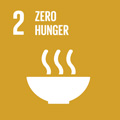- Docente: Silvana Hrelia
- Credits: 4
- SSD: BIO/10
- Language: English
- Moduli: Silvana Hrelia (Modulo 1) Cristina Angeloni (Modulo 2)
- Teaching Mode: Traditional lectures (Modulo 1) Traditional lectures (Modulo 2)
- Campus: Rimini
-
Corso:
Single cycle degree programme (LMCU) in
Pharmacy (cod. 9078)
Also valid for Single cycle degree programme (LMCU) in Pharmacy (cod. 5987)
Learning outcomes
The aim of the course is to give a basic knowledge about the biochemical role and the mechanism of action at the cellular, molecular, metabolic and genetic level of the nutraceutical components contained in food, to describe the rational use of the main nutraceuticals in the protection / prevention of chronic degenerative diseases, to study the interactions between nutraceuticals and drugs, and to give the general rationale for the optimal utilization of nutraceutical compounds in the framework of guidelines for proper nutrition.
Course contents
Module 1 Silvana Hrelia
Nutrition evolution from model 1.0 to model 3.0. Definition of Health, Quality of Life and Well-being. Definition of Nutraceutical. Nutraceuticals versus Pharmaceutics? The concept of Human Enhancement Medicine and Pharma-Food.
Insights on oxidative stress: the oxygen paradox. References of redox chemistry: reactive oxygen species (ROS) as pro-oxidants. Endogenous sources of ROS: mitochondria, NADPH oxidase, peroxisomes, lysosomes, cytosolic sources. Nitrogen oxide (NO) and peroxynitrite. Exogenous sources of ROS: UV radiation, ionizing radiation, environmental pollution. ROS reactivity and stability.
Oxidative stress and cellular damage to lipids, proteins, DNA. Severity of oxidative stress and biological consequences: related pathologies.
Phytochemicals contained in food: classification. “Pharmacological” doses vs. "physiological" doses. Nutraceutical bioavailability.
Mechanism of action of nutraceuticals: anti-inflammatory action and the signal transduction pathway mediated by the NF-kB factor; detoxifying action and the transduction pathway mediated by the Nrf2 factor.
The main phytochemicals with Nutraceutical action: flavonoids, anthocyanins, allyl sulphides, glucosinolates and isothiocyanates, isoflavones, curcuminoids, gingerol.
Module 2 Cristina Angeloni
From functional food to nutraceuticals: the European Consensus Document. Nutritional claims (permitted nutritional claims), functional and health-related claims.
Nutraceuticals with chemopreventive action.
Cardioprotective nutraceuticals: focus on non-enzymatic glycation.
Nutraceuticals with neuroprotective action: focus on Alzheimer's and Parkinson's diseases
Nutraceuticals and Nutrigenomics: introduction to nutrigenomics, difference between nutrigenetics and nutrigenomics, direct and indirect effect of nutrients on gene expression, epigenome and modulation by nutraceuticals.
Nutraceutical-Drug interaction and potential toxicity of Nutraceuticals.
Readings/Bibliography
Lecture notes in the form of a pdf file of the slides projected in class.
Nutraceuticals: Efficacy, Safety and Toxicity. Ramesh C. Gupta, Academic Press 2016
Selected paper published on Scientific Journals
Teaching methods
Lezioni frontali con l'ausilio di presentazioni in formato Power Point.
Assessment methods
The examination at the end of the course aims to assess the achievement of learning objectives:
- to know the main nutraceuticals in food and mechanism of action
- to know the role of nutraceutical compounds in the prevention of chronic/degenerative diseases
- to know the rationale and evidence to use nutraceuticals, their interactions with drugs and to correctly communicate their use
The exam consists of an oral examination. The vote is defined by an oral test with two questions aimed at evaluating the theoretical knowledge on nutraceuticals, on the possibility of preventing degenerative / chronic diseases through their use, on the rationale for use to compensate for the potential inadequacy of the diet and the interaction with drugs. The first question will be on a topic chosen and developed by the student (also through group work), the second will be selected by the teacher on the topics covered in the program. Registration is required by Alma Esami.
Teaching tools
PC, overhead projector, Teams platform
Office hours
See the website of Silvana Hrelia
See the website of Cristina Angeloni
SDGs



This teaching activity contributes to the achievement of the Sustainable Development Goals of the UN 2030 Agenda.
